Early Summer 2023 Snapshots From Extension’s Pollinator Paradise Garden
go.ncsu.edu/readext?947215
en Español / em Português
El inglés es el idioma de control de esta página. En la medida en que haya algún conflicto entre la traducción al inglés y la traducción, el inglés prevalece.
Al hacer clic en el enlace de traducción se activa un servicio de traducción gratuito para convertir la página al español. Al igual que con cualquier traducción por Internet, la conversión no es sensible al contexto y puede que no traduzca el texto en su significado original. NC State Extension no garantiza la exactitud del texto traducido. Por favor, tenga en cuenta que algunas aplicaciones y/o servicios pueden no funcionar como se espera cuando se traducen.
Português
Inglês é o idioma de controle desta página. Na medida que haja algum conflito entre o texto original em Inglês e a tradução, o Inglês prevalece.
Ao clicar no link de tradução, um serviço gratuito de tradução será ativado para converter a página para o Português. Como em qualquer tradução pela internet, a conversão não é sensivel ao contexto e pode não ocorrer a tradução para o significado orginal. O serviço de Extensão da Carolina do Norte (NC State Extension) não garante a exatidão do texto traduzido. Por favor, observe que algumas funções ou serviços podem não funcionar como esperado após a tradução.
English
English is the controlling language of this page. To the extent there is any conflict between the English text and the translation, English controls.
Clicking on the translation link activates a free translation service to convert the page to Spanish. As with any Internet translation, the conversion is not context-sensitive and may not translate the text to its original meaning. NC State Extension does not guarantee the accuracy of the translated text. Please note that some applications and/or services may not function as expected when translated.
Collapse ▲In late 2008, I planted a demonstration pollinator garden at Chatham Mills to provide forage from early spring to late fall for pollinators such as honey bees, native bees, butterflies, flower flies, hummingbirds, beetles, and other beneficial insects. The garden features over 225 unique species of perennials, 85% of which are native to North Carolina. The garden is a great teaching tool that I use to conduct workshops and tours for hundreds of folks each year. It has taught me so much and I enjoy sharing this knowledge with others. Below you can see photos of the pollinator garden from mid-June through mid-July. There were over 80 species in bloom in mid-July!
Click here for links to all the seasonal photo collections.
Register for a summer pollinator garden tour.
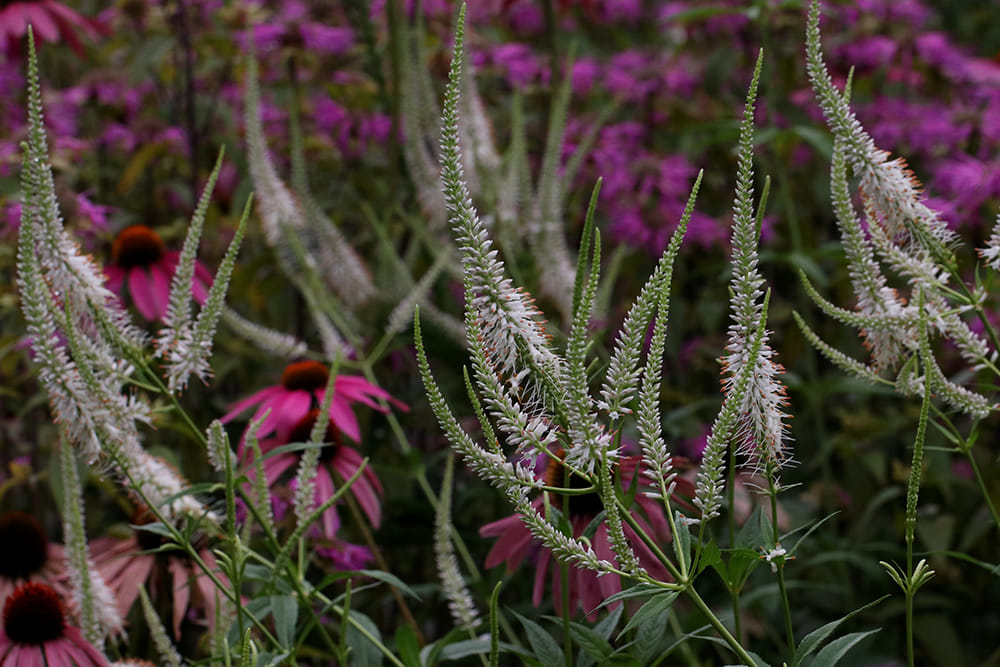
Culver’s root, coneflowers, and bee balm. Photo by Debbie Roos.

Monarch nectaring on tall blazing star. Photo by Debbie Roos.
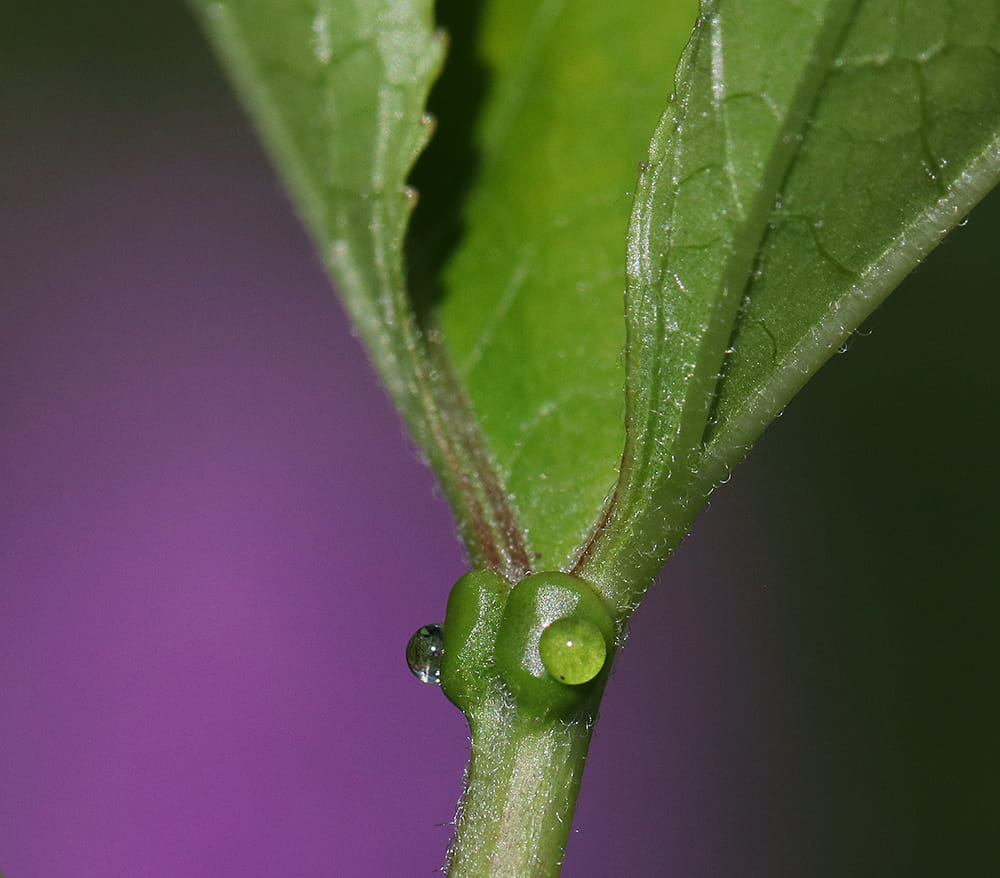
Nectar secreted from the extrafloral nectaries on the petiole of a purple passionflower leaf. Photo by Debbie Roos.
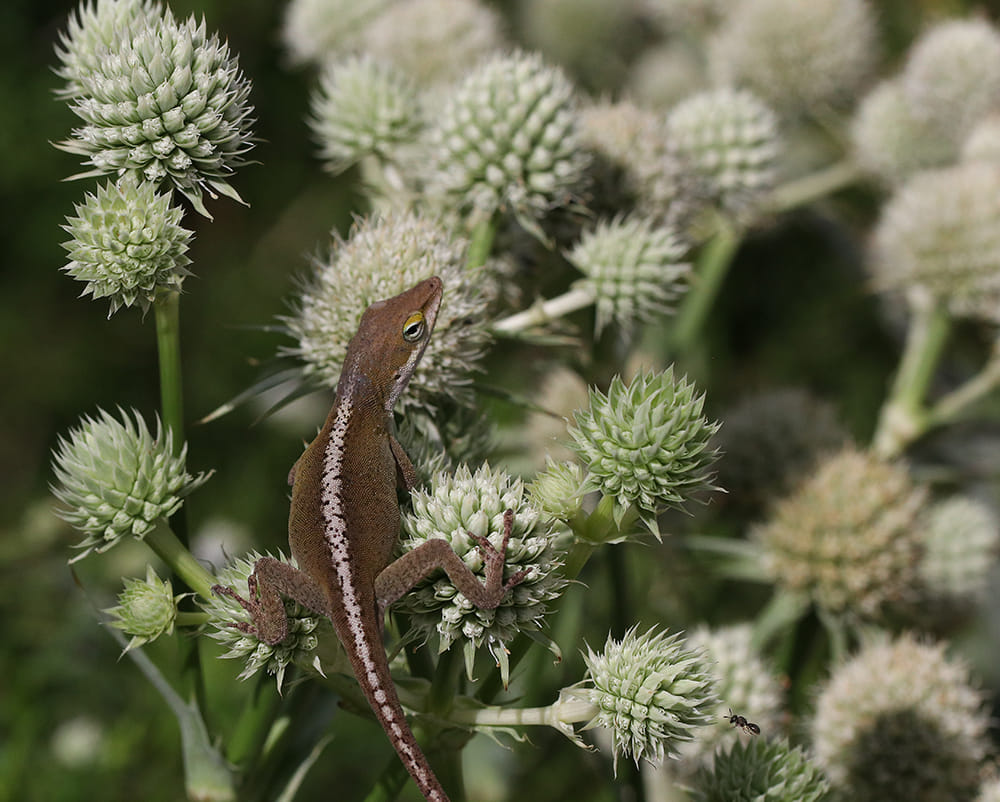
Carolina anole on rattlesnake master. Photo by Debbie Roos.
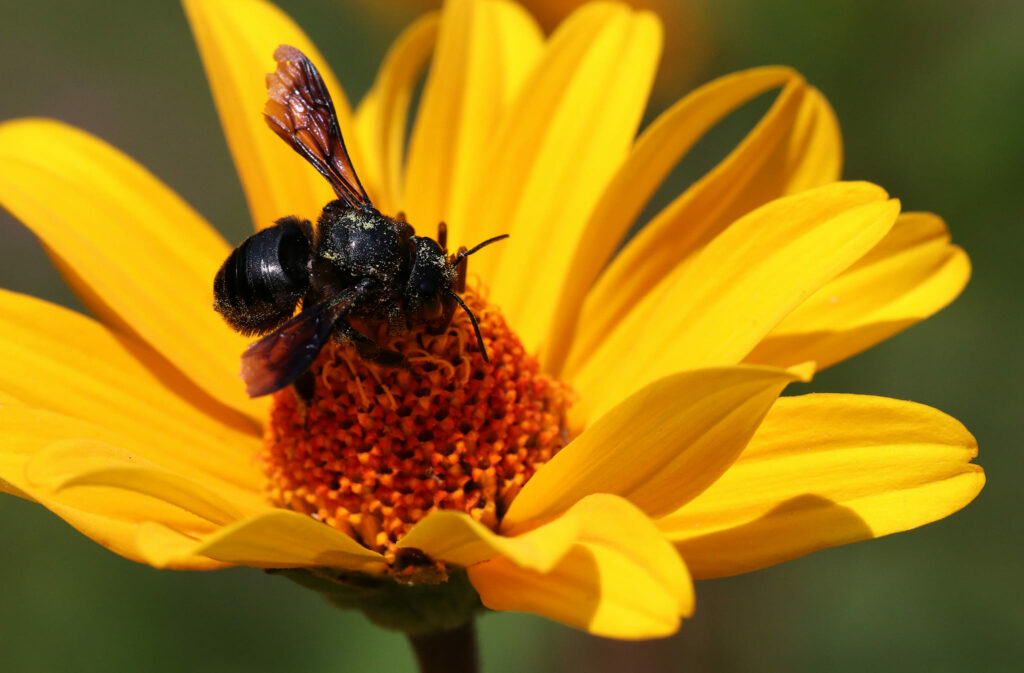
Carpenter-mimic leafcutter bee on oxeye daisy. Photo by Debbie Roos.
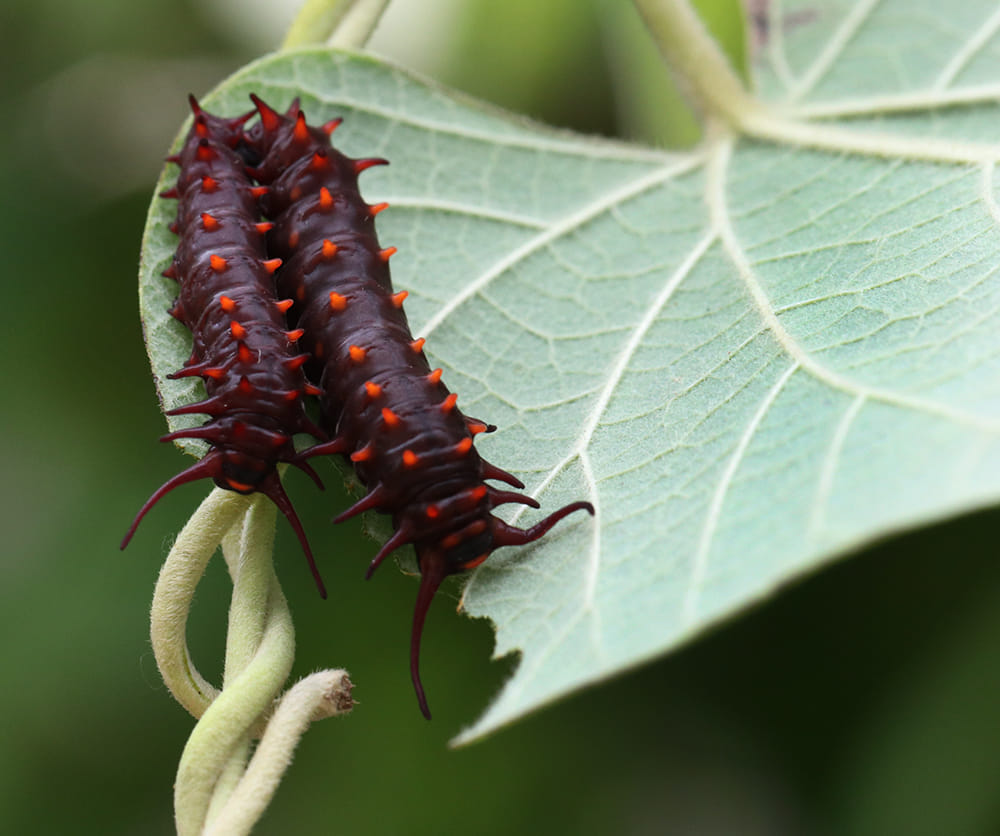
Pipevine swallowtail caterpillars on Dutchman’s pipe. Photo by Debbie Roos.
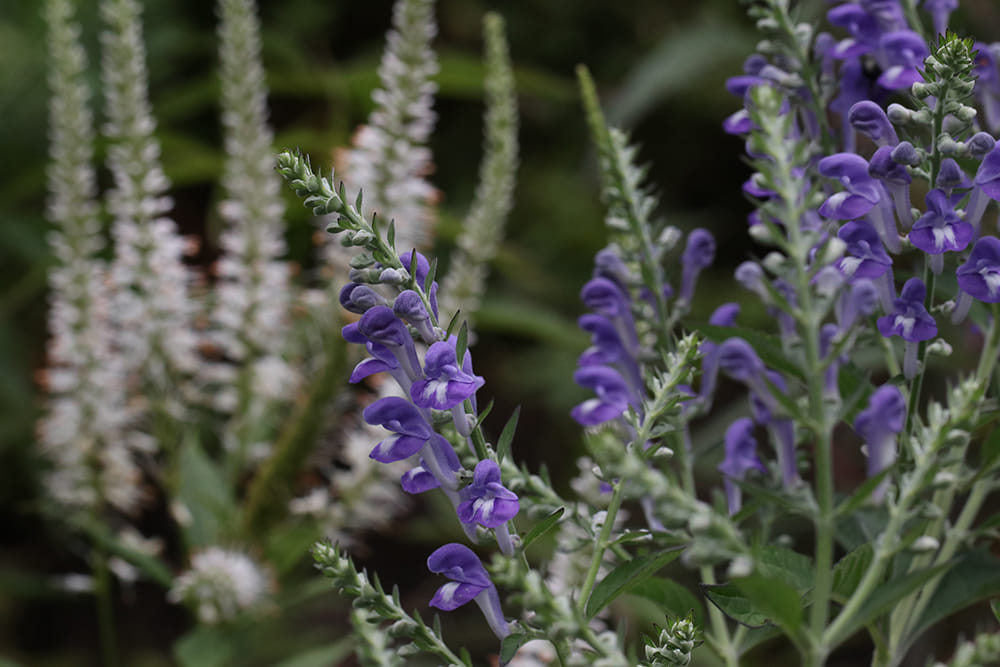
Hoary skullcap backed by culver’s root. Photo by Debbie Roos.

Florida predatory stink bug feeding on a lady beetle on milkweed. Photo by Debbie Roos.
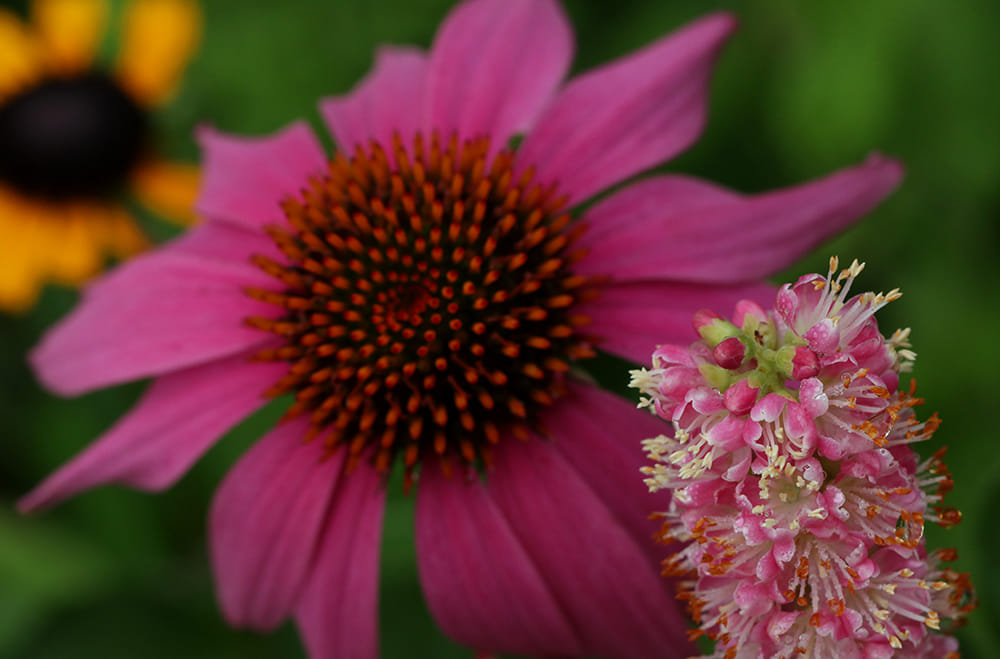
Sweet pepperbush with purple coneflower and orange coneflower. Photo by Debbie Roos.
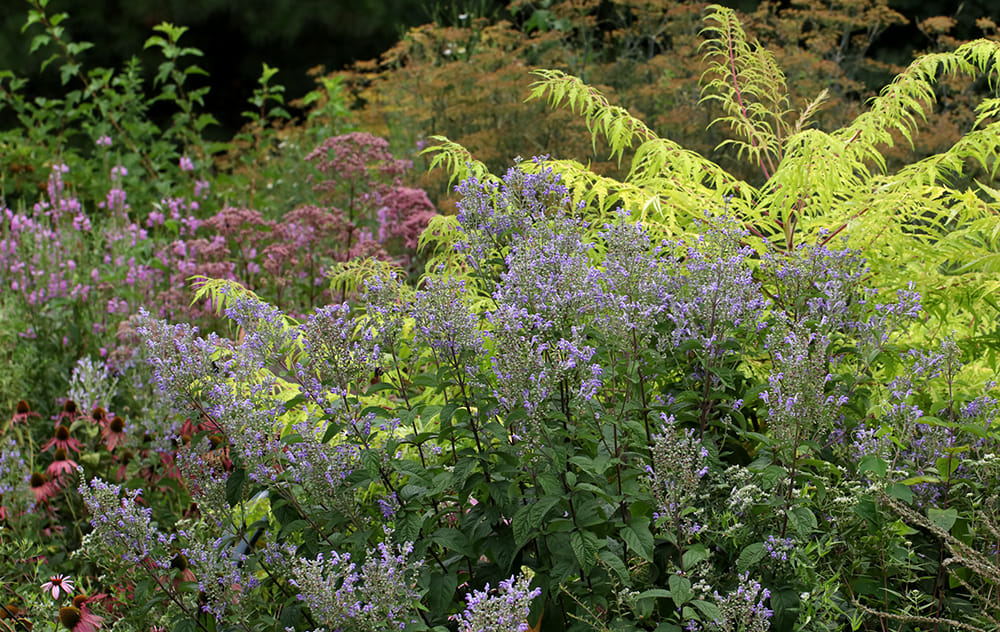
One of the parking lot island beds. Photo by Debbie Roos.
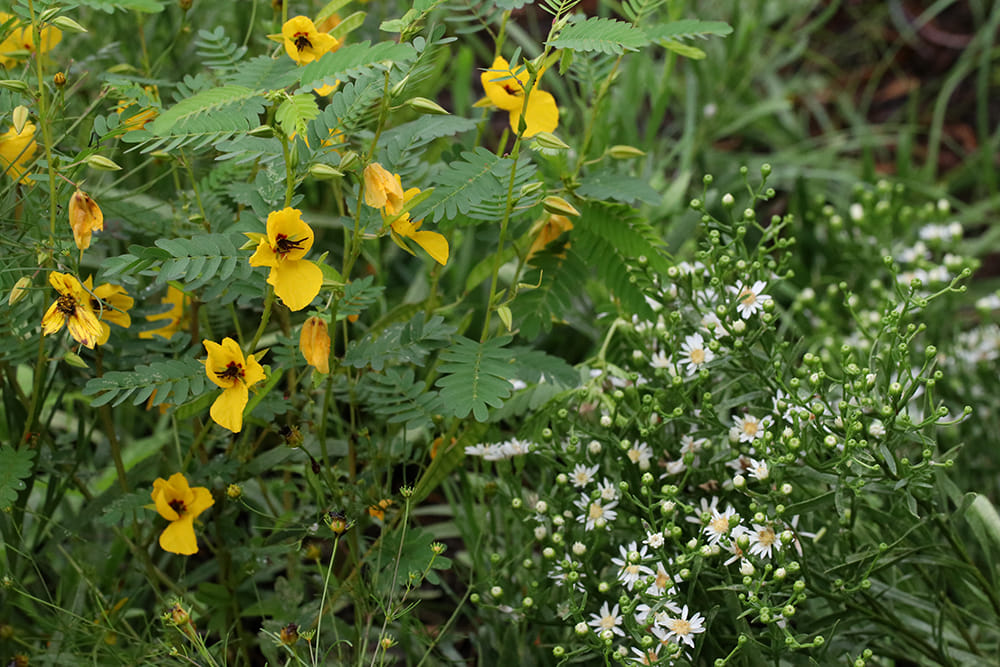
Native annual partridge pea with prairie goldenrod. Photo by Debbie Roos.

Spurred butterfly pea vine. Photo by Debbie Roos.

Close up of red rose mallow bloom. Photo by Debbie Roos.

Eastern tiger swallowtail on buttonbush. Photo by Debbie Roos.
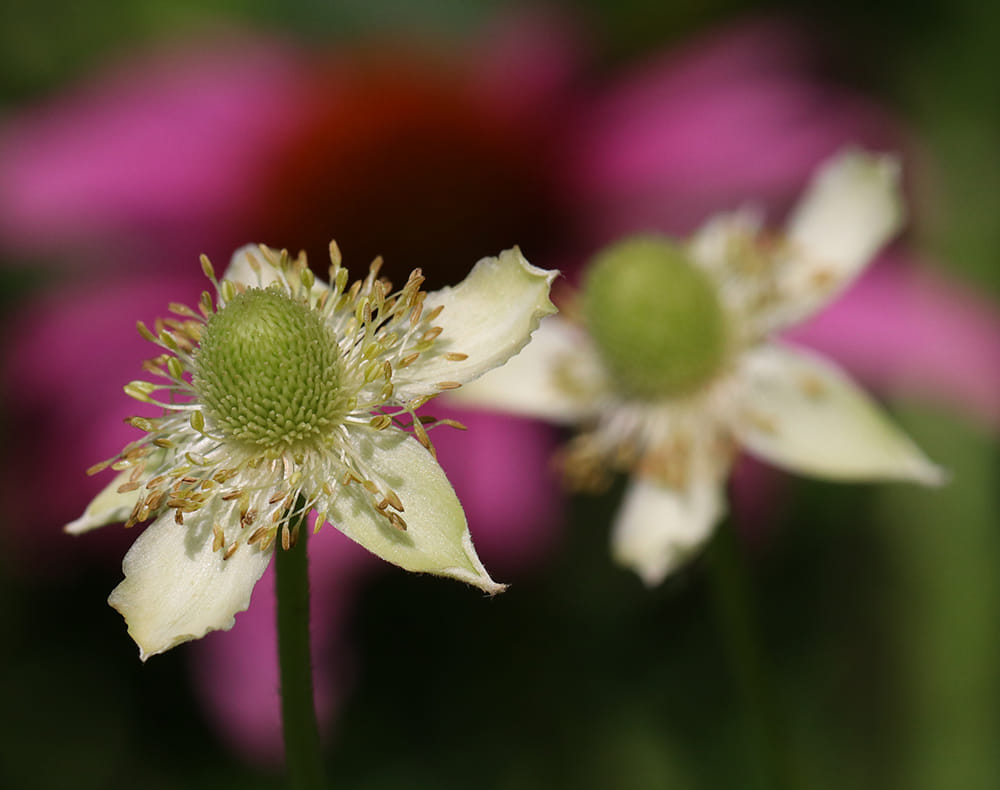
Tall anemones. Photo by Debbie Roos.
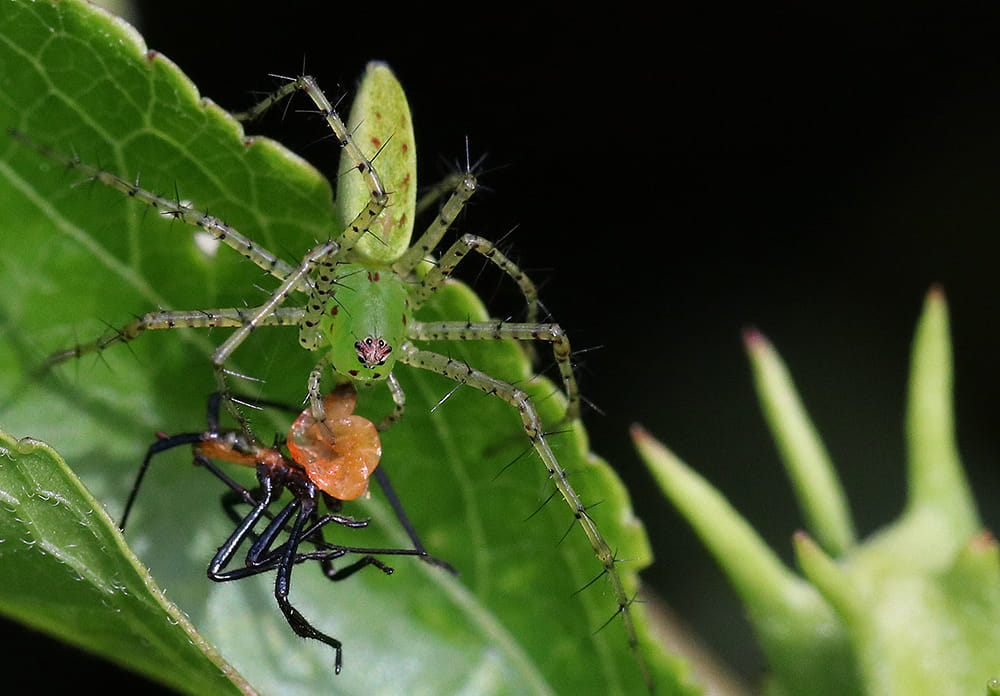
Green lynx spider feeding on leaf-footed bug nymph. Photo by Debbie Roos.

Carolina wild petunia. Photo by Debbie Roos.
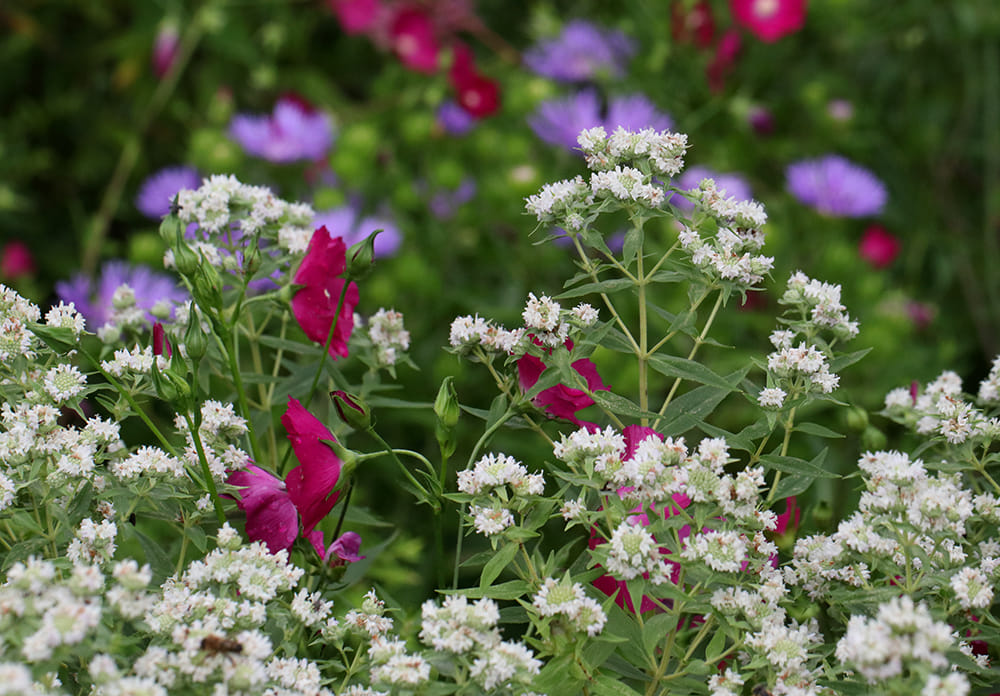
Virginia mountain mint with prairie poppy mallow and stoke’s aster. Photo by Debbie Roos.
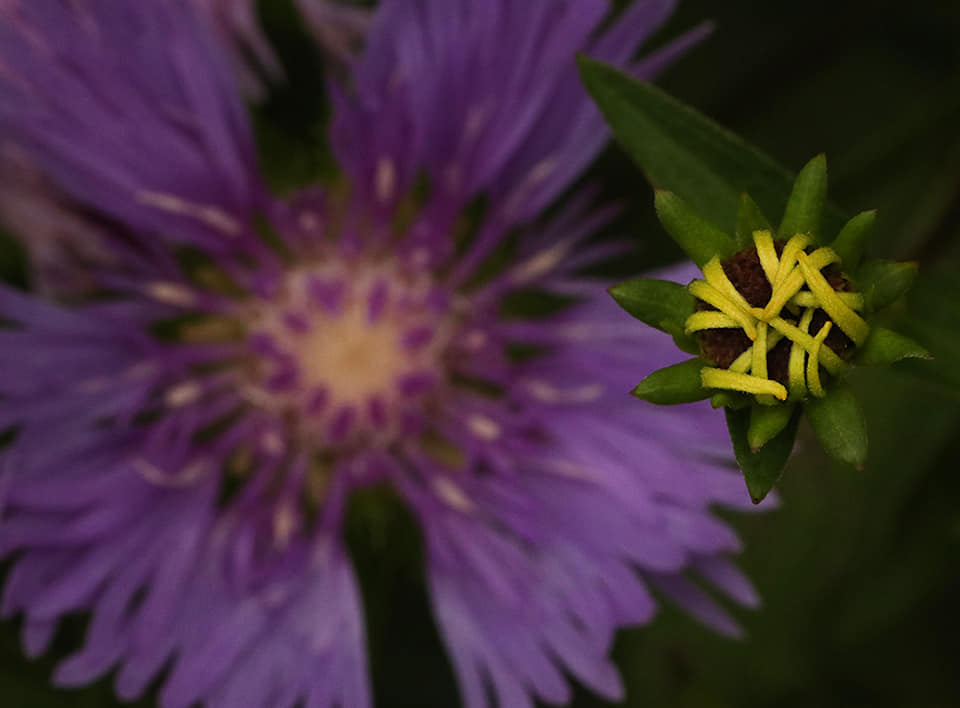
Orange coneflower about to unfurl, with stoke’s aster. Photo by Debbie Roos.
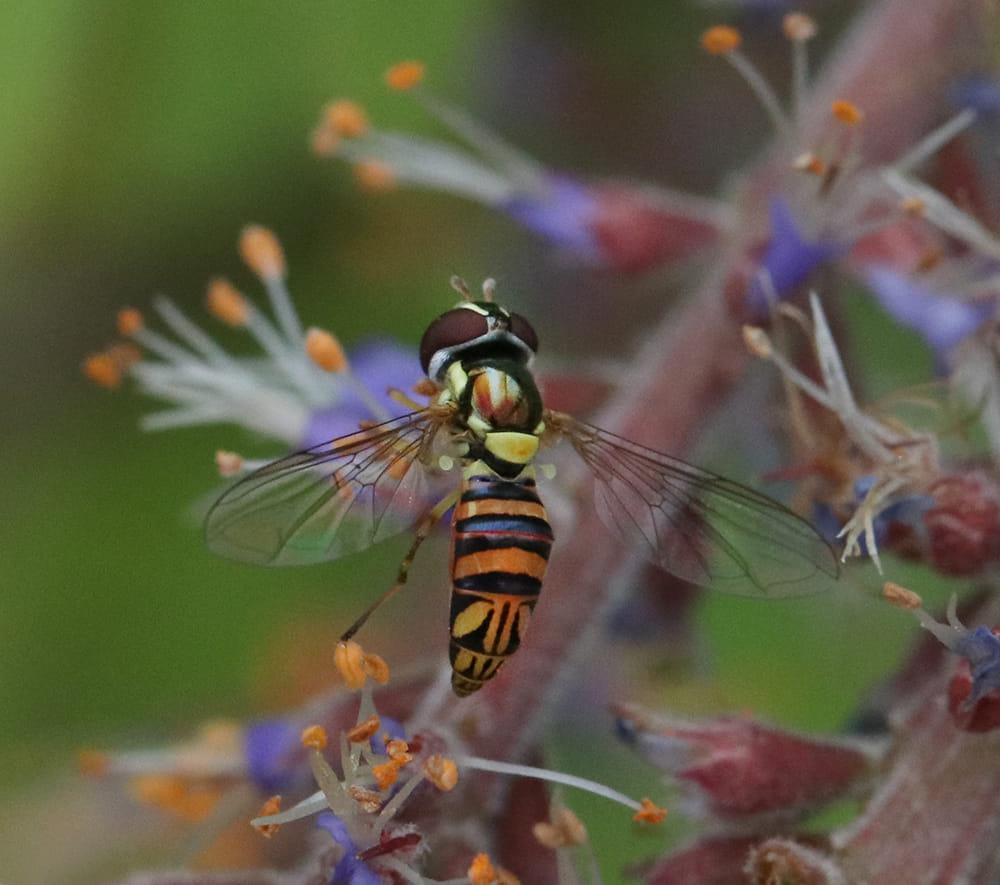
Calligrapher fly on dwarf indigo bush. Photo by Debbie Roos.
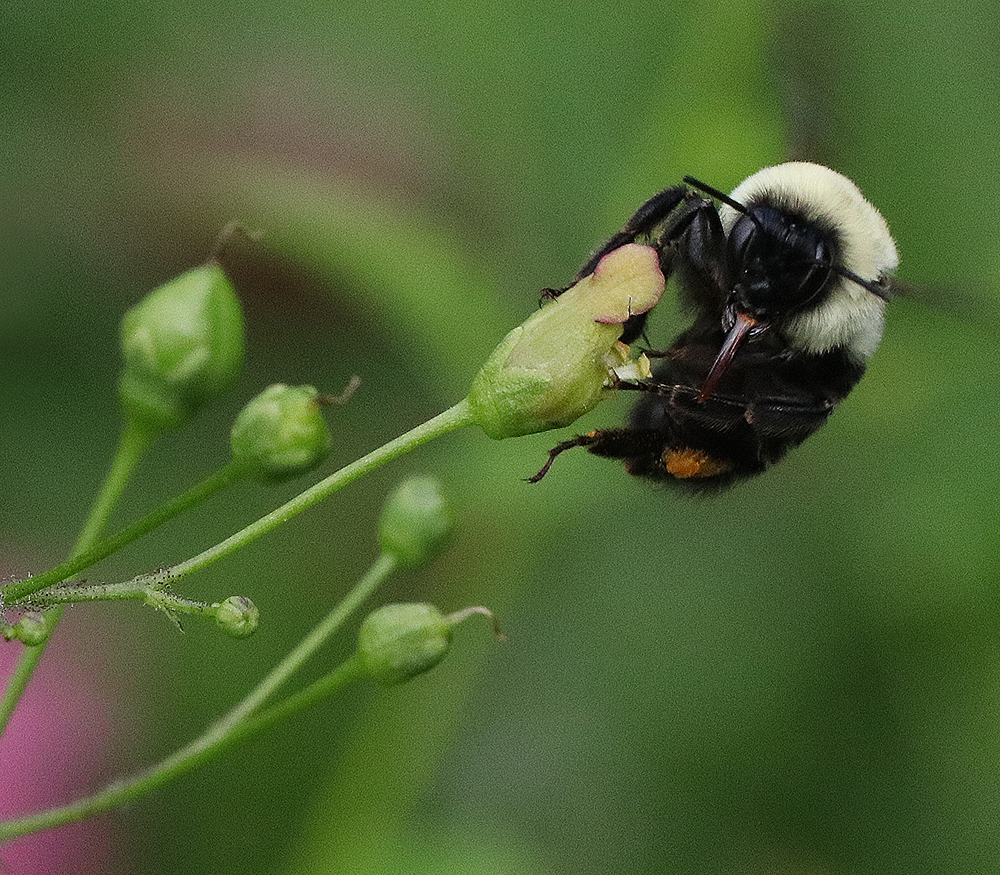
Bumble bee on late figwort. Photo by Debbie Roos.
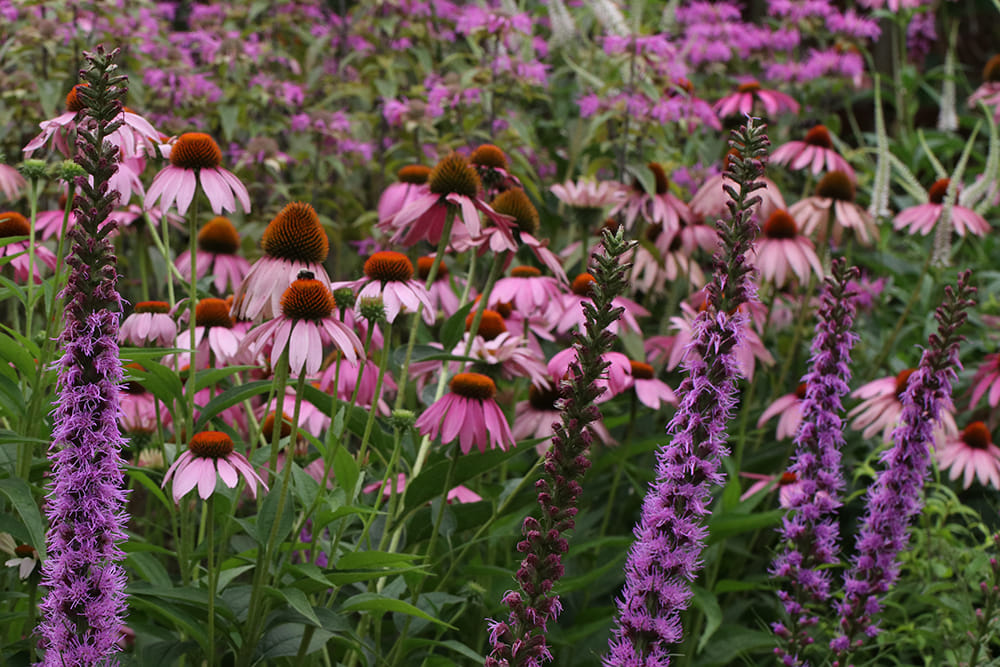
Blazing star with coneflower and bee balm. Photo by Debbie Roos.
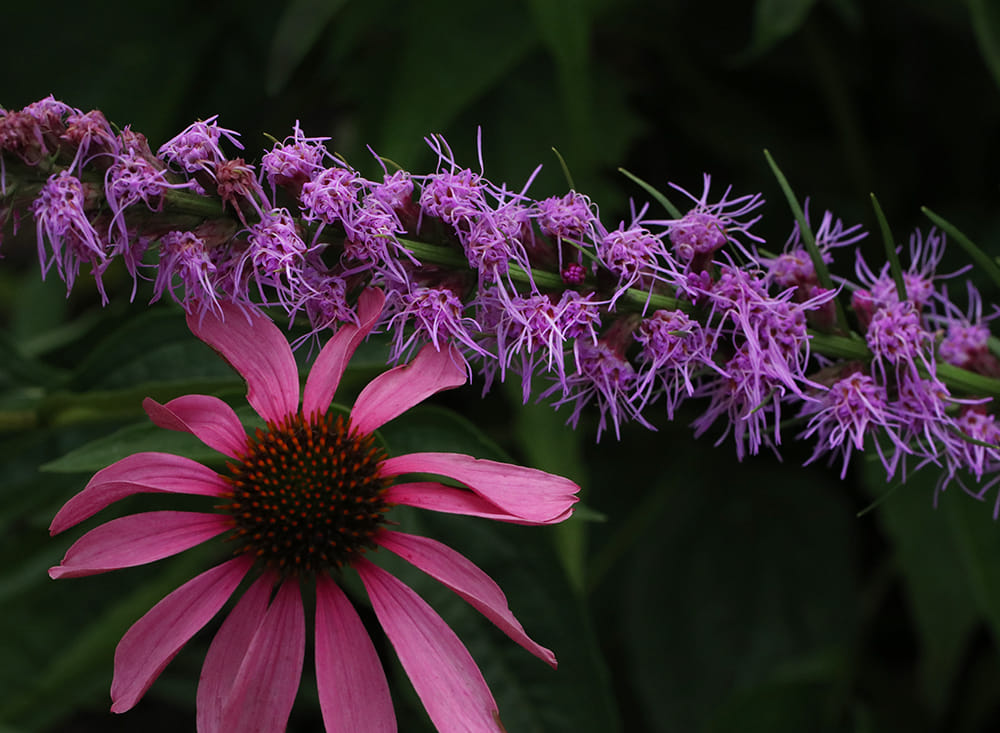
Blazing star with purple coneflower. Photo by Debbie Roos.
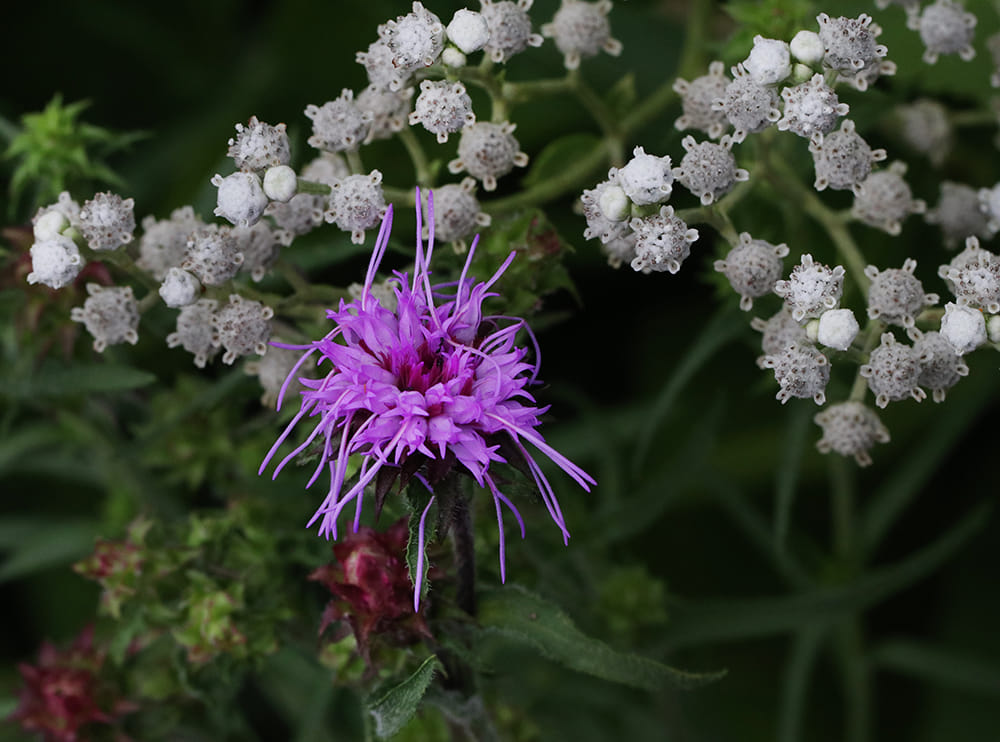
Scaly blazing star with wild quinine. Photo by Debbie Roos.

Native groundnut vine with Baptisia seed pods. Photo by Debbie Roos.
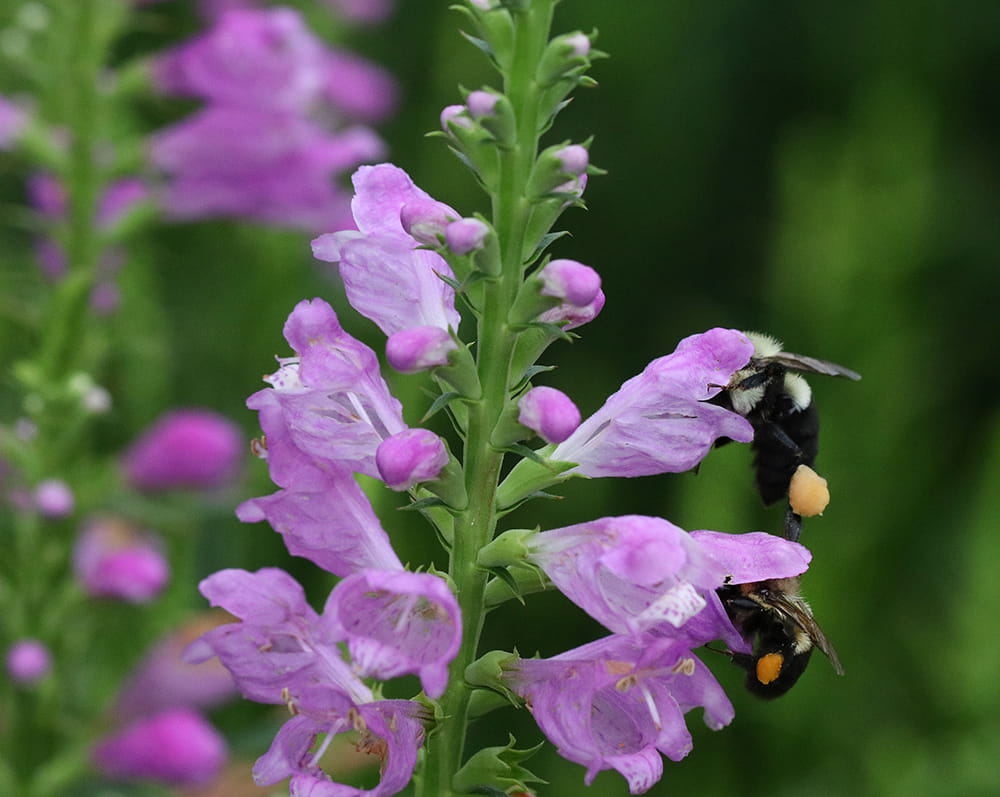
Double-decker bumble bee foraging on obedient plant. Photo by Debbie Roos.


